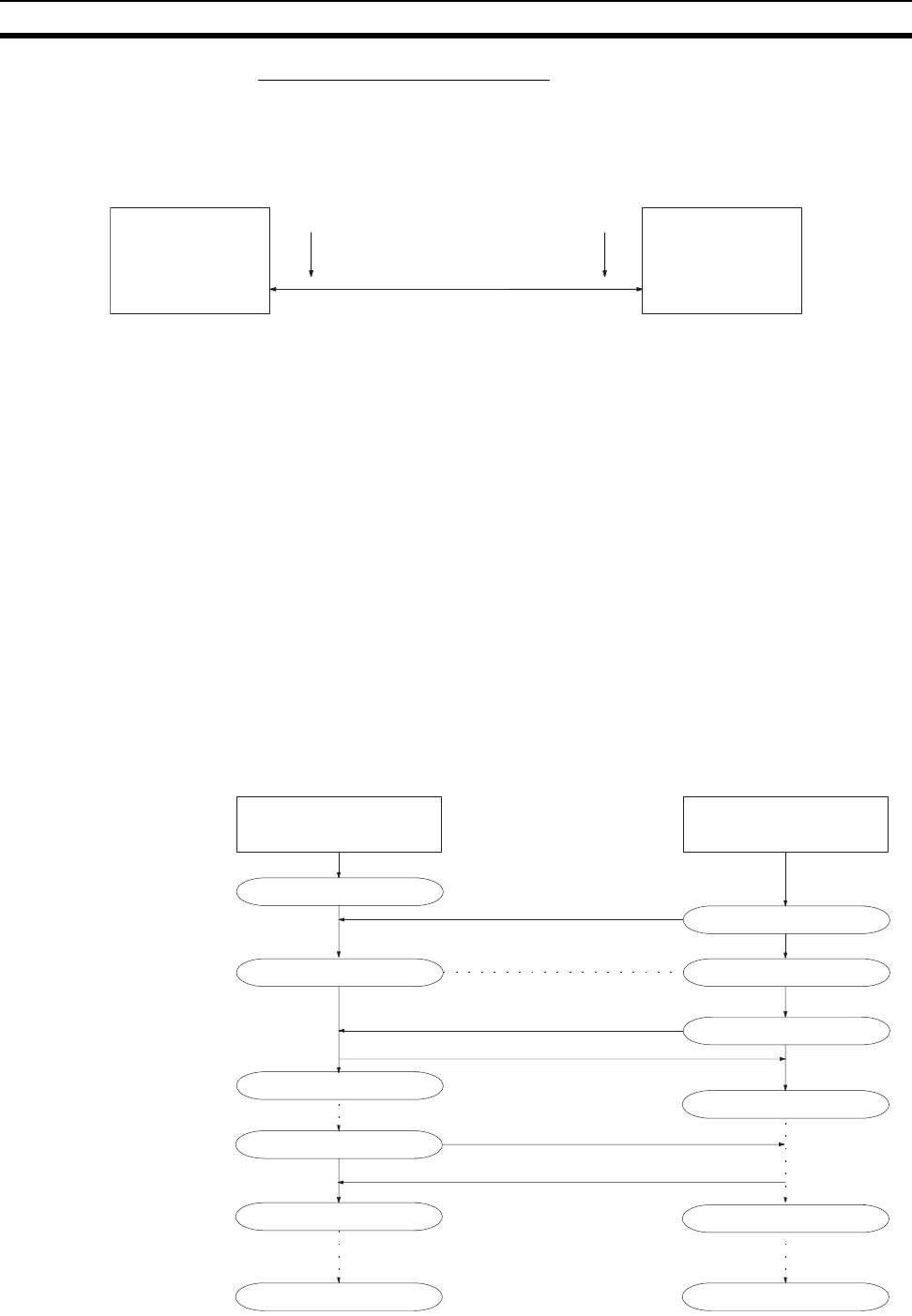
101
Protocol Overview Section 6-2
■ Passive OPEN and Active OPEN
An open command is executed for a node to establish a connection. The open
method differs depending on whether the node is a client or server. A passive
open method is used to open the node as a server and the active open
method is used to open the node as a client.
Note 1. TCP sockets must be closed once a connection has been made before
communications are possible with other TCP sockets. This is true for other
server and client sockets. Up to eight TCP sockets can be open simulta-
neously.
2. With UDP sockets, communications are possible with more than one other
UDP socket.
3. When a connection is made between two nodes, the process at the node
providing a service is called the server, and the process at the node re-
questing the service is called the client. The server is started first and waits
for a service request from a client. The client requests to the server that a
connection be opened and then transmits data. When the TCP protocol is
used, however, the client–server relationship does not need to be pro-
grammed in the application because it is automatically handled by the pro-
tocol.
TCP Communications Procedure
The communications procedure is shown below for communications between
a host computer and Ethernet Unit using a TCP socket. In this example, the
host computer is the server and the Ethernet Unit is the client.
Client
TCP
socket
Active
open
Connection
Passive
open
Server
TCP
socket
Host computer
(server)
Passive open
Ethernet Unit
(client)
Connection requested
Active open
Send data
Data send request
Data receive request
ACK (acknowledge)
Send next data
Connection established
Close Close
Send data
ACK (acknowledge)
Connection established
Data send request
Data receive request
Next data receive request


















